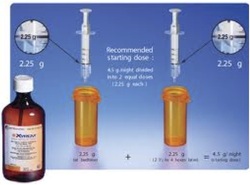
Neurologic insults or medical conditions associated with secondary narcolepsy can be localized to the hypothalamus or they can be global.
EDS AND CATAPLEXY PLUS
In secondary narcolepsy (narcolepsy that is due to a medical condition), excessive daytime sleepiness must be present almost daily for at least three months, and a significant underlying medical or neurological disorder that accounts for the daytime sleepiness must be present along with one of the following criteria:a) a definitive history of cataplexy, orī) atypical (questionable) cataplexy plus confirmatory studies (CSF hypocretin-1 measurement or nocturnal polysomnogram followed by Multiple Sleep Latency Test), orĬ) CSF hypocretin-1 level < 110 pg/mL (or 1/3 of normal control values). The diagnosis must be confirmed by one of the following:ī) confirmatory sleep studies (nocturnal polysomnogram followed by a Multiple Sleep Latency Test). The daytime sleepiness is not better explained by another sleep disorder, medical condition, or medication use.

In narcolepsy without cataplexy, excessive daytime sleepiness must be present almost daily for at least three months, but there is either no history of clear-cut cataplexy or a history of atypical (questionable) cataplexy-like episodes. If a history of clear-cut cataplexy is present, the diagnosis need not be but should be confirmed by one of the following:Ī) measurement of cerebrospinal fluid (CSF) hypocretin-1, orī) nocturnal polysomnography (six hours of sufficient sleep and no other sleep disorders) followed by a Multiple Sleep Latency Test (mean sleep latency ≤ 8 min and ≥ 2 sleep-onset REM periods). Narcolepsy without cataplexy has been a topic of debate since, without clear-cut cataplexy, symptoms of narcolepsy (without cataplexy) may be due to hypersomnia of unknown etiology.įor narcolepsy with cataplexy, excessive daytime sleepiness must be present almost daily for at least three months, along with a history of clear-cut cataplexy. The International Classification of Sleep Disorders-2 (ICSD-2) divides narcolepsy into three categories: narcolepsy with cataplexy, narcolepsy without cataplexy, and secondary narcolepsy, discussed below. It is very rare to develop narcolepsy in infancy or old age. It usually develops within the second or third decade of life (most commonly before age 25). Narcolepsy affects men and women equally, with a prevalence of approximately 1 in 2000 in the United States. Hypocretin neurons are selectively damaged in patients with narcolepsy, but the cause of the damage is unknown. Narcoleptic humans have very low or absent levels of cerebrospinal fluid (CSF) hypocretin-1. Produced exclusively in the hypothalamus, the neuropeptides hypocretin-1 and -2 (orexin A and B) are intimately involved in wake-promoting mechanisms.

Human narcolepsy with cataplexy is due to a deficiency in the neuropeptide hypocretin (also known as orexin), a major wake-promoting neurotransmitter. The cause of narcolepsy has yet to be determined, but there is evidence for both genetic and environmental factors. The intrusion of REM sleep into wakefulness is the pathophysiologic phenomenon behind cataplexy, sleep paralysis, and hypnagogic hallucinations. Unlike other individuals, narcoleptics exhibit short REM sleep latency (sleep-onset REM or SOREM), in which REM sleep is achieved immediately or very soon after sleep onset. Dysregulation of REM sleep is a key feature of narcolepsy.


 0 kommentar(er)
0 kommentar(er)
